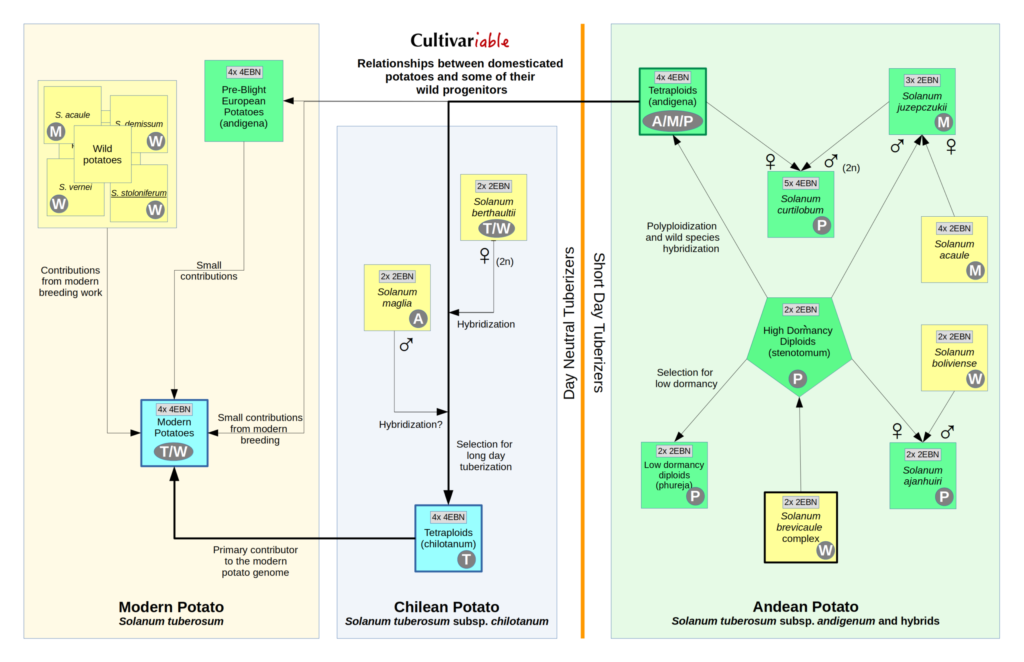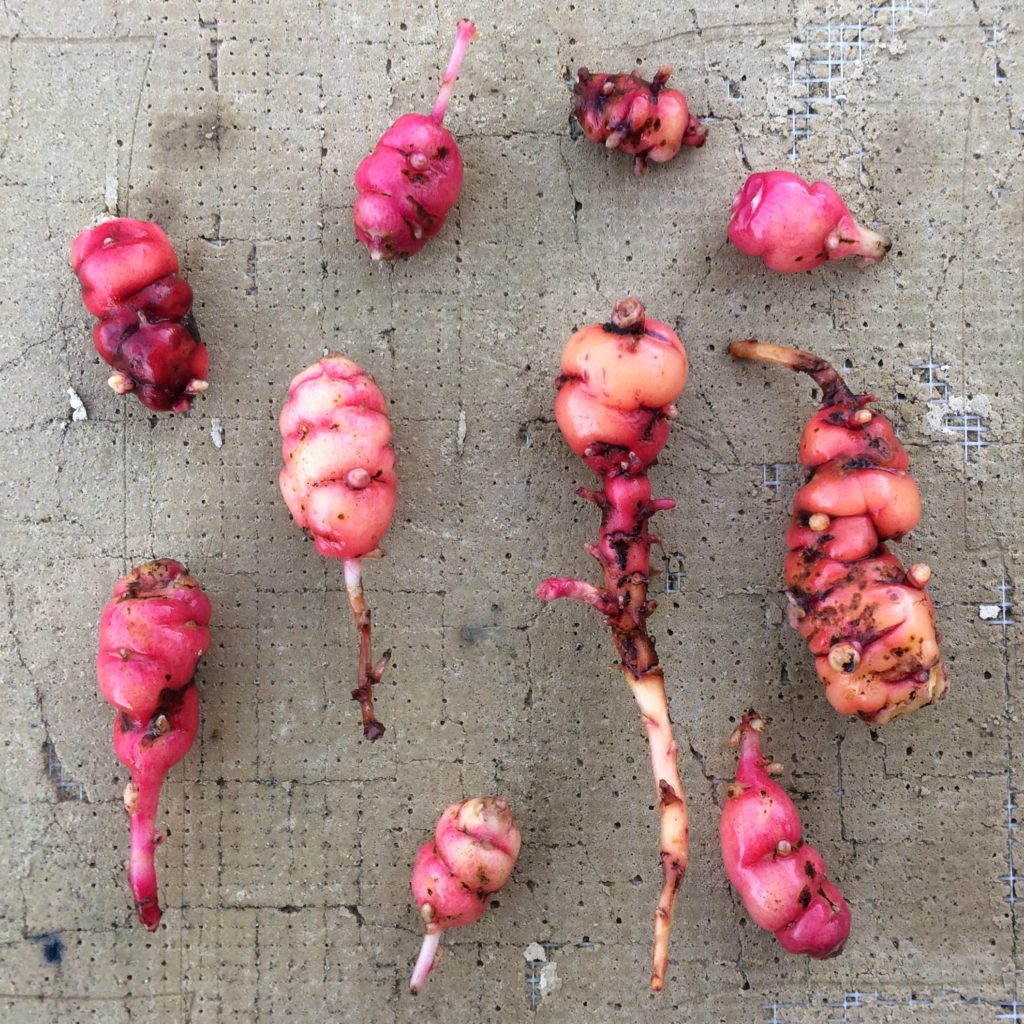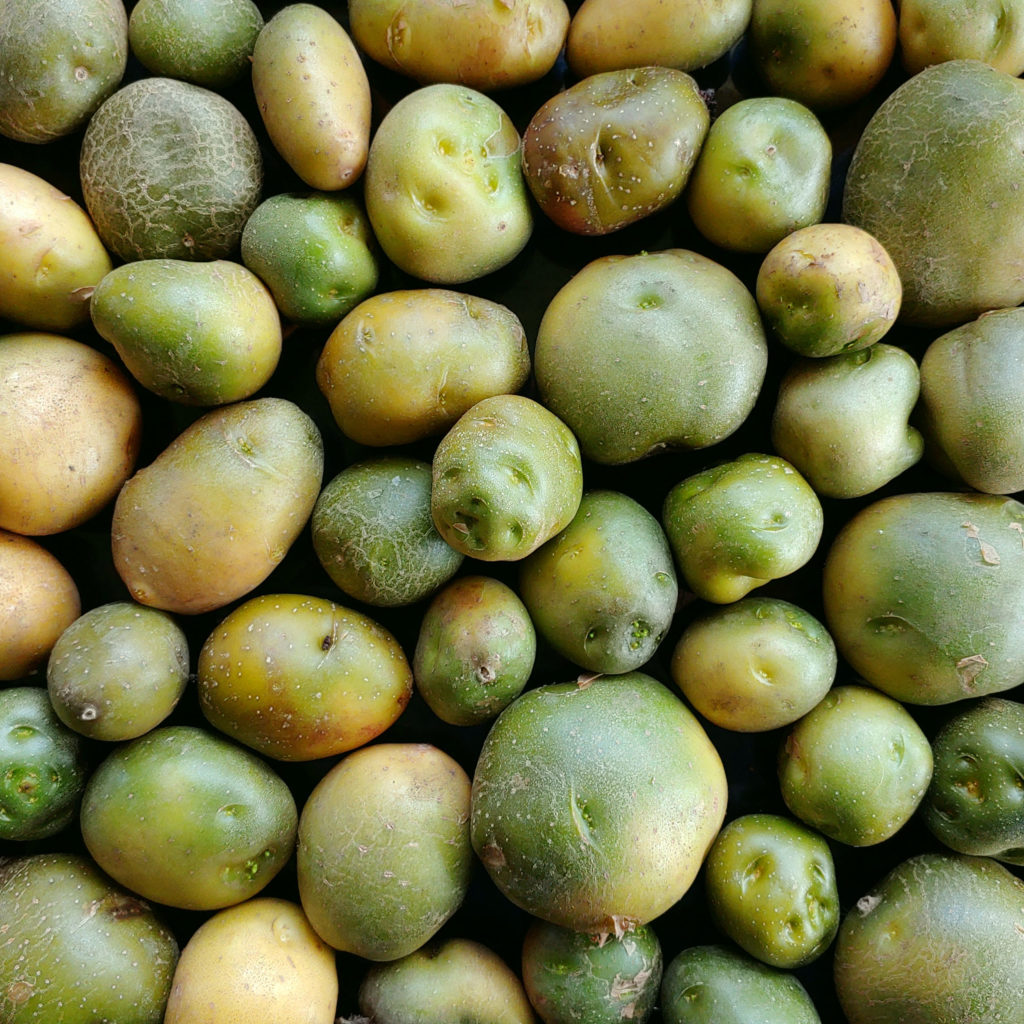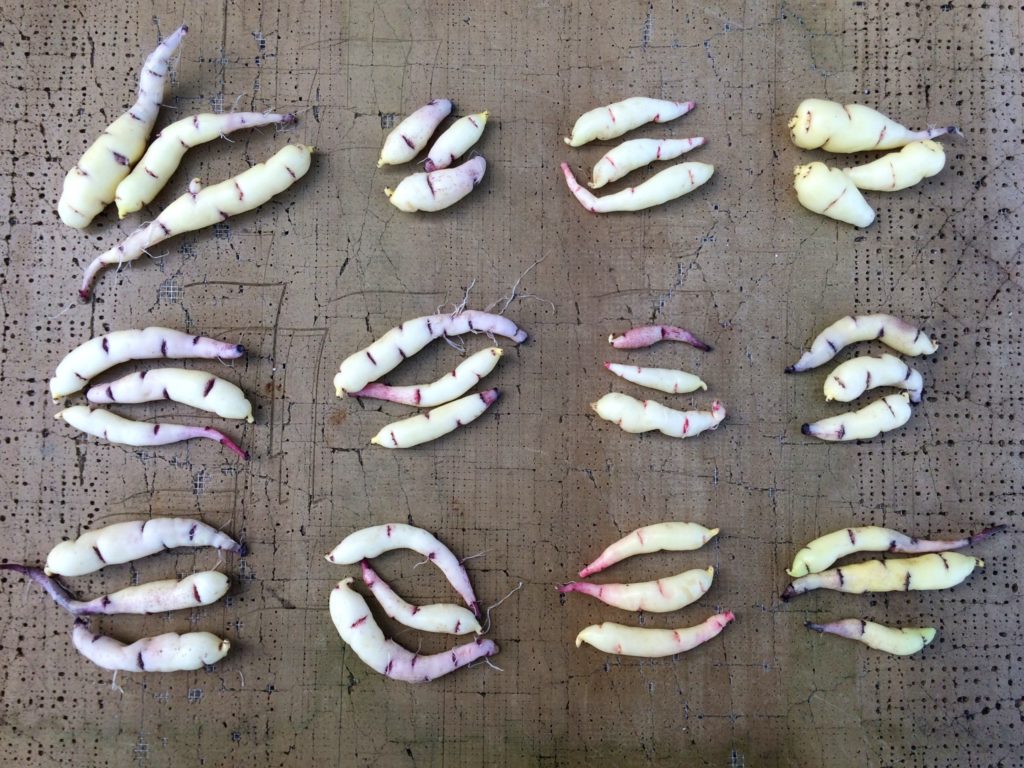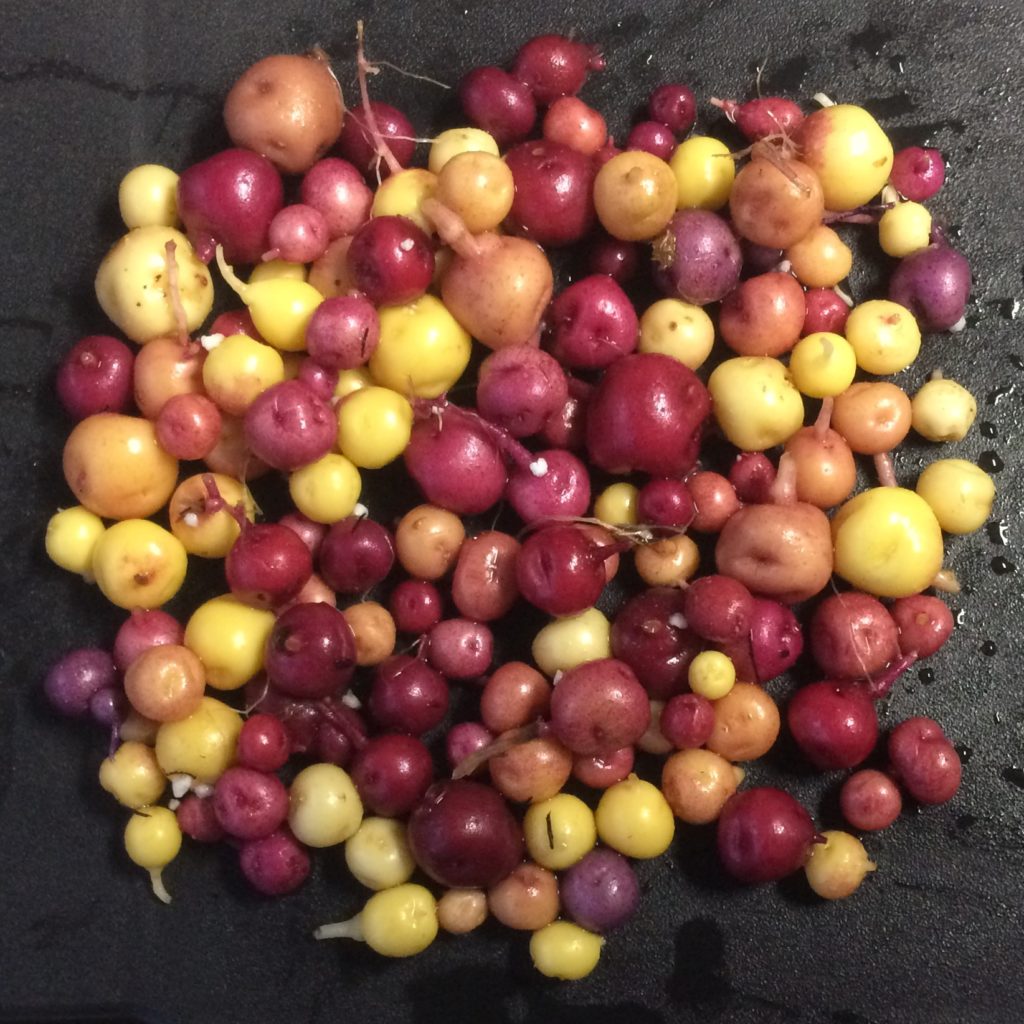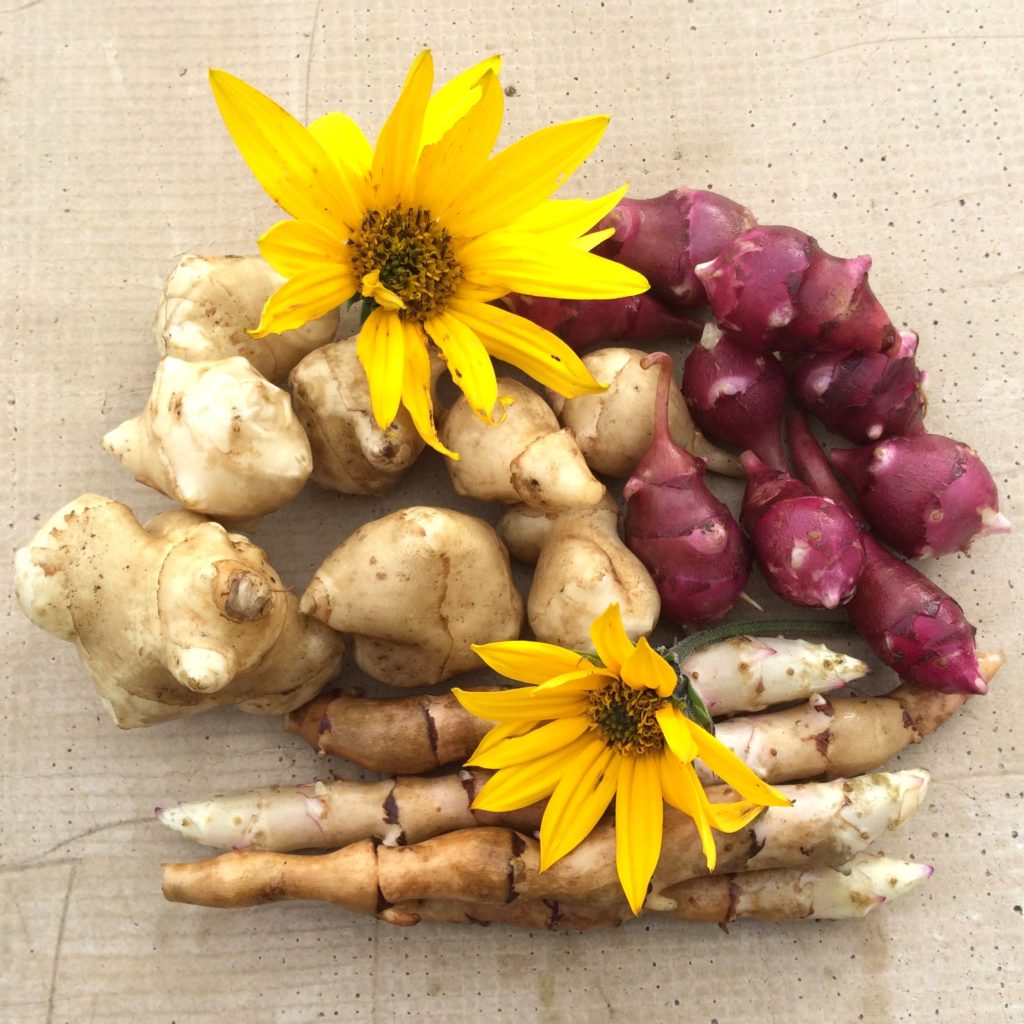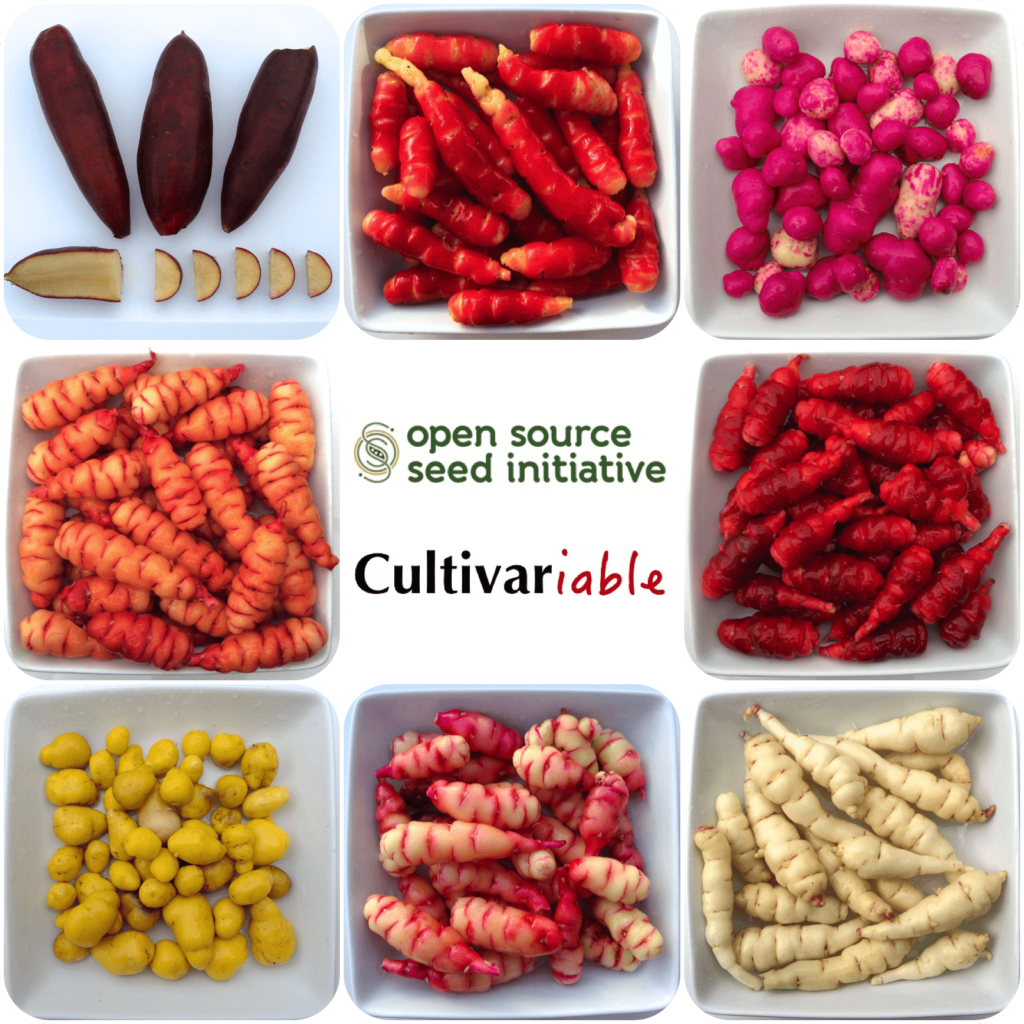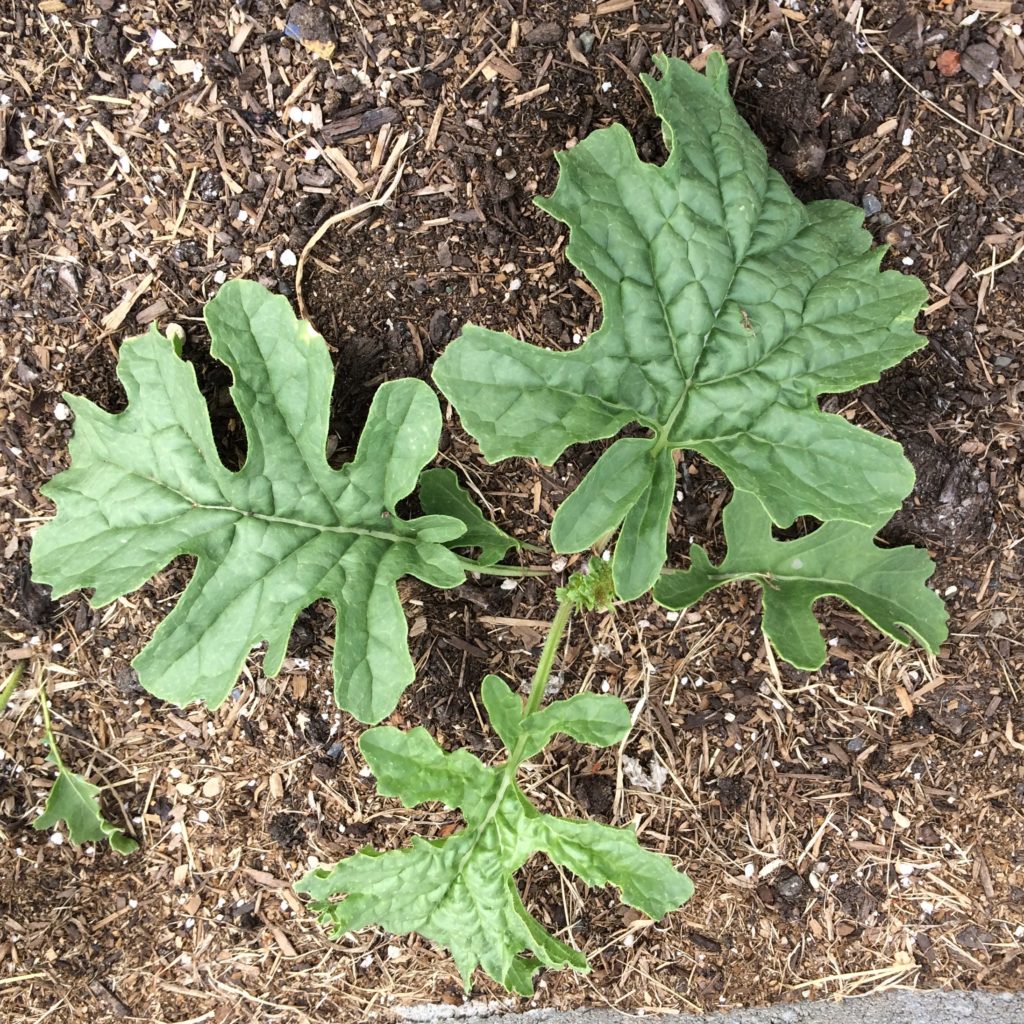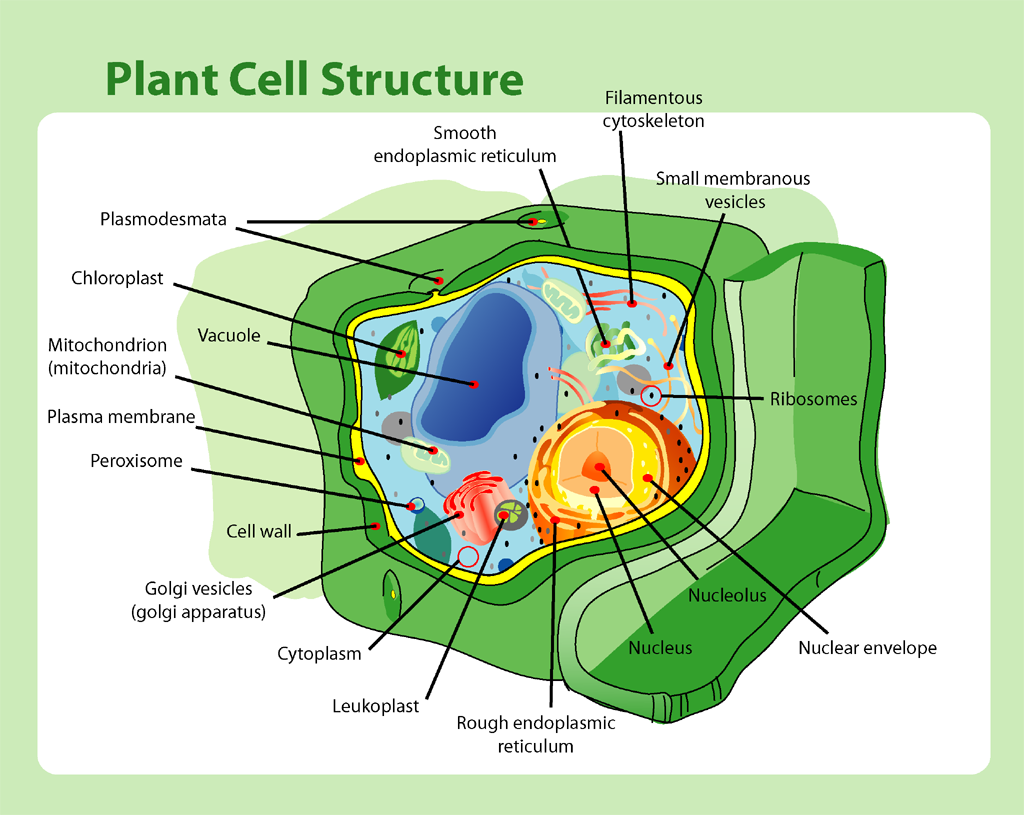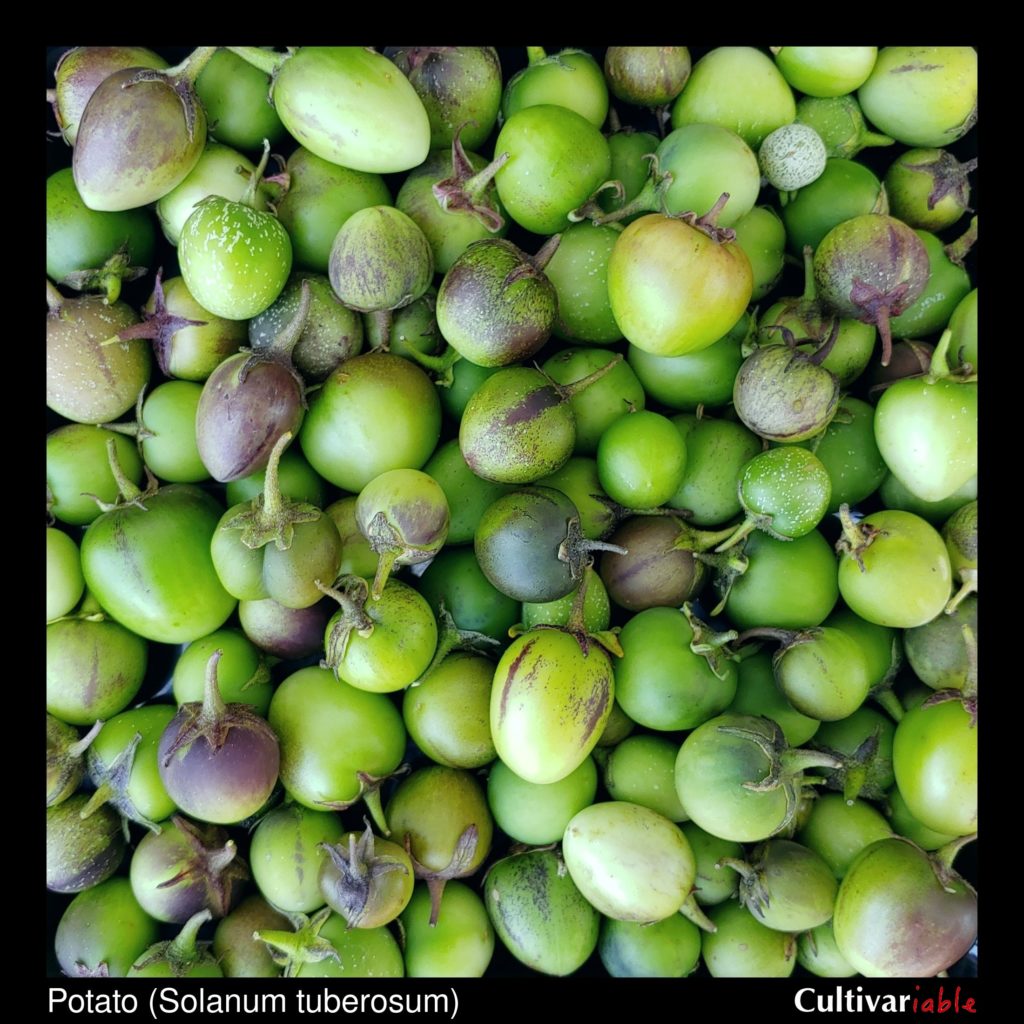Being a fundamentally lazy person, I always prefer to search for work that has already been done by somebody else. That can be frustrating in the world of plant breeding, where information tends to come in two forms: highly technical or excessively simplified. There isn’t much middle ground. My search for a chart showing the […]
Author Archives: bill
One of the best things about growing oca is that it is generally very resistant to disease. Unlike potatoes, which are vulnerable to more than a dozen common diseases and need constant attention, oca usually fends for itself very well. The most common problem here is a bacterial stem rot, but it usually occurs late […]
Overview All potatoes contain toxic compounds called glycoalkaloids, of which the most well-known is solanine. Potatoes accumulate glycoalkaloids primarily to deter pests. Glycoalkaloids are usually heavily concentrated in the foliage, but are also present in the tubers. A safety limit of 20 mg of total glycoalkaloids per 100 g of potato was established a century […]
The domesticated varieties of mashua (Tropaeolum tuberosum) are tetraploid, meaning that they have four copies of each chromosome. This allows the plant to carry twice the genetic diversity of a diploid organism (like most animals and many plants). Balanced against that, mashua is most likely an autoploid, meaning that it became tetraploid by doubling its […]
This post is not really meant to be read start to finish. The intent is that it will be picked up by search engines so that breeders and researchers working with these accessions in the future can find this information. We use accessions supplied by the USDA in some of our breeding work. This report […]
Some of the more frequent questions that people ask me center on obtaining seed from Jerusalem artichokes for breeding. Many crops that are propagated from tubers have a reduced capability for sexual reproduction. You will see this theme come up again and again in this blog, but the details differ from one species to another. […]
I breed 16 species seriously, meaning that I am actually able to make progress and either already have or anticipate eventually releasing new varieties. I work with another 21 species either prospectively, meaning that I would like to breed them but haven’t managed to get them to reproduce sexually, or on too small a scale […]
I have been working with Tartar Bread Plant (Crambe tataria) for a few years. In my opinion, it has great potential as a sort of perennial mustard green. I think perennial leaf crops are highly desirable; they often provide an earlier harvest than seed grown crops and can be a substantial labor savings. Not much […]
If it has been a long time since high school biology and you are rusty on the concept of cytoplasm, you can be forgiven. It’s not something that most of us think about very often, but it is important to potato breeding, so let’s review. Cytoplasm is everything that is inside a cell but outside […]
Overview Potato plants sometimes flower and then form berries. Potato berries form only in favorable weather and with sufficient pollination. Potato berries contain seeds that you can grow. The berries are toxic and should not be eaten. There is not usually any reason to remove the berries from the plant. Seeds from berries that fall […]

